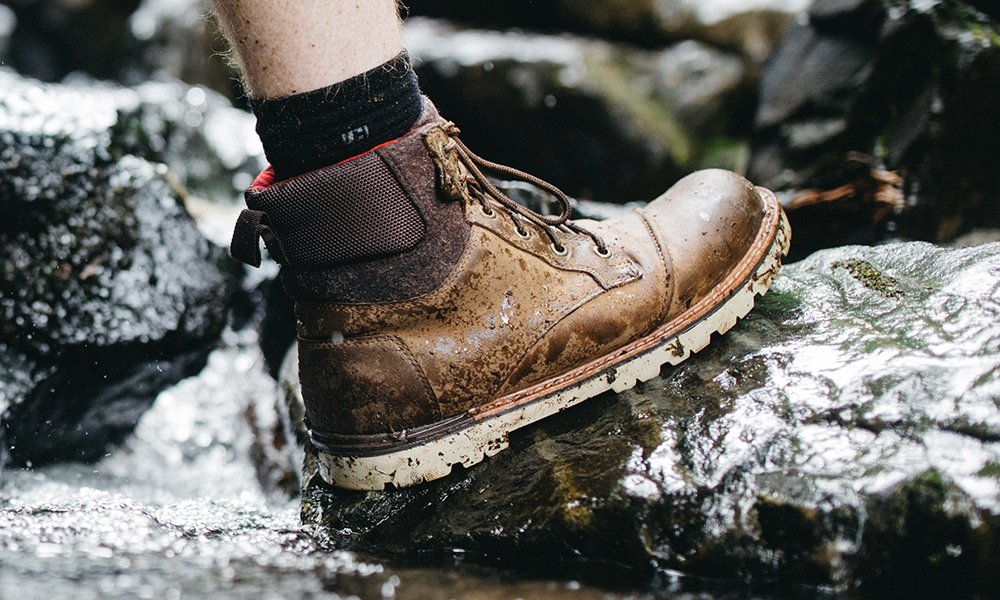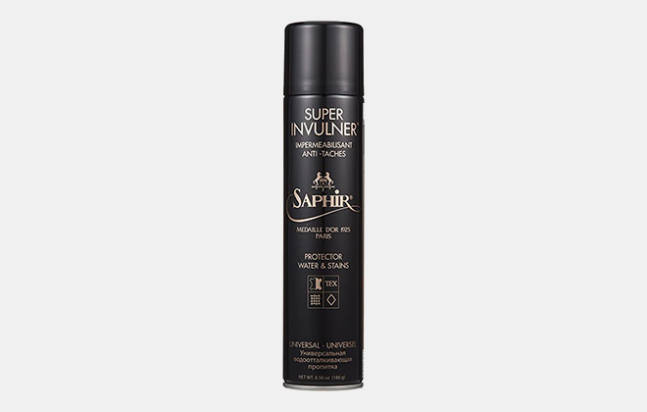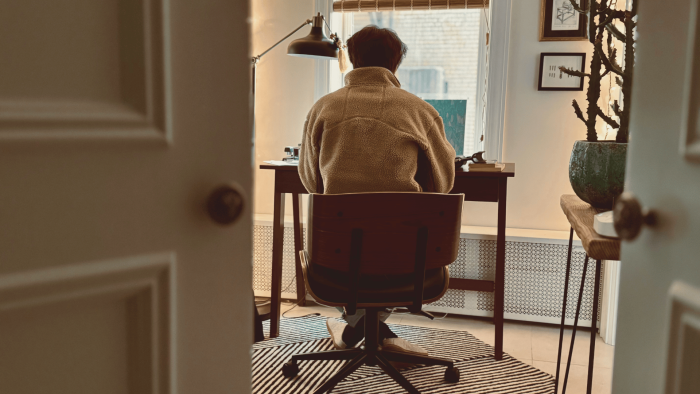The start of fall means colder, and often wetter, days are ahead. That means to protect your footwear (and your feet) from puddles, rain, and snow, you’ll need to waterproof the boots and shoes you plan on wearing out.
The keys to properly waterproofing your boots or other footwear is to properly clean it first, and then to understand which treatment is best for the material. Some treatments take more time to apply than others, and some require multiple applications. It’s also important to keep in mind that unless your shoes or boots are made of rubber, they’ll never be truly waterproof the way dedicated rain boots are. The best you can hope for is to make your shoes and boots highly water and snow resistant, and knowing the limitations is half of the battle.

How to Waterproof Suede Boots and Shoes
Suede is the brushed underside of a leather hide. (There’s also nubuck, which is a sanded surface of the hide that’s similar to suede but not as fibrous). Suede has exposed leather fibers that make up the nap. When water hits the hairs, they get soaked very quickly and then become brittle and stiff when the water dries. It’s easy for these suede fibers to break off, and it doesn’t take much water to damage suede. Nubuck doesn’t have the same level of fiber exposure, but it’s still not especially water-friendly. In short, these materials look great but don’t especially hold up well when the weather gets bad.
How To Clean Suede Boots and Shoes
First off, make it a habit to use a clean suede shoe brush to get dust and dirt off. If you don’t have one, you can use a clean, firm-bristle toothbrush instead. Make sure you don’t brush too hard and work with the grain of the suede, not against it. Wearing them without doing this regularly will make it very hard for any waterproofing substance to permeate the suede and remain there. Prior to waterproofing, make sure you thoroughly clean them beyond just a quick brushing (meaning you need to remove the laces and brush all surfaces thoroughly). If there are stains on the suede, you can add dry baking soda to the stain and leave it on for 15 minutes before using the same suede brush to clean the area. Suede stain erasers also work well and only cost a few dollars. If you have truly stubborn stains, a mix of water and white vinegar or a dedicated suede cleaner will work wonders. Use a clean microfiber towel and work gently to remove the stain. Once you’ve done this, make sure you wait until the shoe is fully dry before continuing. If stain removal requires quite a bit of wet application, then you may have to wait overnight. Do not try to speed up the process with heat because this will damage the suede.
Conditioning and Protecting Suede Boots and Shoes
Unlike leather, you shouldn’t apply any cream or wax to suede because you will matt down the nap and also likely darken the material. Once you’ve properly cleaned your footwear, a good conditioning and waterproofing spray is all you need. Move your shoes to a well-ventilated area and apply the spray per the product instructions. Apply quickly and evenly and don’t concentrate on any one area. Allow some drying time and re-apply at least two to four coats. Once they’re completely dry, you’re ready to go. Continue to dry brush them and stain clean when needed, and don’t forget to reapply the waterproofing spray after doing so. Remember your suede boots and shoes are not meant to be immersed in water, so be judicious about when to wear them.
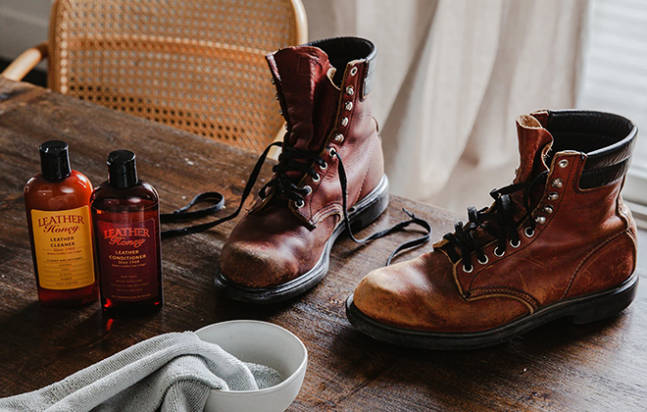
How to Waterproof Leather Boots and Shoes
Not all smooth leather boots and shoes are created equal. Some are strictly for hard-working physical environments and require more substantial waterproofing, while leather boots and shoes for the office require more delicate care and different waterproofing applications. It’s important to know the in leather type (which can almost always be found on the manufacturer’s site), as some are more prone to color changes.
How To Clean Leather Boots and Shoes
For stubborn stains on smooth leather, it’s best to use a high-quality saddle soap rather than a brush. Saddle soap has restorative properties and can rejuvenate leather in the process of cleaning it. Apply it sparingly with a wet sponge or cloth and work up a small lather with a dime-sized portion of saddle soap. Use a circular motion and apply the saddle soap all over. Use a damp cloth to wipe down the lather and then wipe with a dry cloth. Repeat the process if the stains have not come out. Allow the boots to dry for 24 hours. If you’re only in need of a gentle cleaning or you’re concerned about darkening the leather should you use too much saddle soap, opt for a gentle liquid cleaner for leather boots and shoes. As always, follow the instructions and use a gentle cloth like a microfiber towel.
Conditioning and Protecting Leather Boots and Shoes
Mink oil works remarkably well for hardy winter boots and shoes because it infuses the leather with rich oils and also provides a good measure of waterproofing. Mink oil also provides excellent protection against leather-killing salt that’s used on roads and sidewalks in winter months. Mink oil can, however, darken the leather, so it might not be the best choice for fancier leather boots or shoes that you wear to the office. For mink oil applications, use a soft cloth and work the mink oil into the shoes in a circular motion, making sure you get the seams of the boots. Wipe off any excess oil or wax and allow the boots to dry for a full day before exposing them to moisture. For fancier shoes and boots, opt for a leather waterproofing spray versus mink oil or wax. These are far less likely to darken the leather, but the leather also won’t absorbed the product the way leather absorbed wax or oil. That means a spray waterproof coating will often wear off faster and require re-application after being exposed to water a few times.
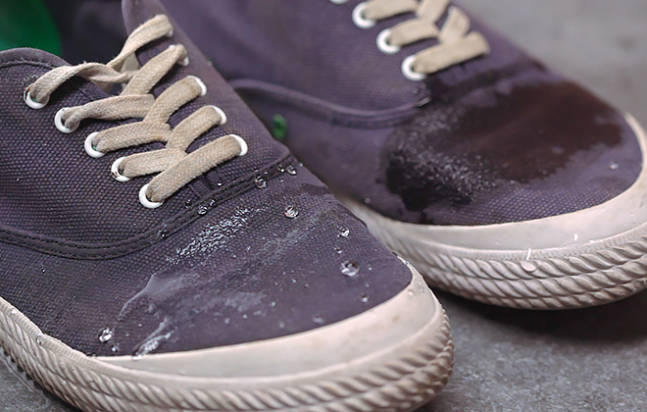
How to Waterproof Leather, Canvas, and Synthetic Sneakers
Sneakers are another animal altogether, and come in numerous materials that require waterproofing if you’re going to wear them in inclement weather. While sneakers aren’t typically the best option when it’s wet and snowy outside, there are ways to wear sneakers year-round without destroying them in the winter.
How To Clean Sneakers
The first rule of cleaning your sneakers is to check what material they’re made with. Don’t use saddle soap on leather sneakers. Instead, opt for a liquid or liquid spray leather cleaner that matches the color. As always, remove the laces first before applying the cleaner, and brush off any dust or dirt. Apply the cleaner as directed and use a soft cloth in a circular motion, but don’t rub too hard or you may rub off the surface of the leather. For stubborn stains, opt for a magic eraser. Effective methods for cleaning canvas or synthetic sneakers is to launder them or use gentle soap and a toothbrush. For white canvas, make sure you rinse them thoroughly to get all the soap out or they will have yellow soap stains when they dry.
Conditioning and Protecting Sneakers
For leather sneakers, use a gentle sneaker conditioning liquid or cream and work it into the leather with a soft cloth. Allow the conditioner to dry before applying any leather waterproofer. It’s best to use a waterproofing spray for all types of sneakers, but read the label for application types first. When possible, avoid sprays that have PFOCs that are harmful to the environment. Silicone spray is chemically stable, highly waterproof, and less harmful to the environment. Apply an even coat, allow to dry, and apply at least one more coat before wearing them outside. Just like waterproofing leather boots with spray, you should clean your shoes and reapply the waterproof a few times per month depending on how often you wear your sneakers.
What Can You Spray on Boots To Make Them Waterproof?
Waterproofing spray is the quickest and most convenient way to waterproof your boots, but it does require greater frequency. Rather than infusing the leather, suede, canvas, or synthetic boot material, these sprays provide a flexible and highly water-resistant coating to the exterior of footwear. The upside is that waterproofing sprays are very easy to apply. The downside is that they typically don’t hold up for very long and require regular re-application.
You may have heard of the use of hairspray as an affordable way to waterproof boots and shoes, but it’s not a good choice. First of all, hairspray isn’t inherently waterproof. It does create a coating, but that coating tends to be rigid based on the polymers used. It might work in a pinch to keep dirt and grime off for a very short period of time, but it doesn’t work long-term and tends to crack when flexed. You’re much better off using a dedicated leather waterproofing spray that’s meant for footwear.
Top-Rated Waterproof Sprays on Amazon
Saphir Medaille d’Or Super Invulner Waterproof Spray
This waterproofing spray gets high marks for its versatility on numerous leather types, including smooth, suede, nubuck, and patent leather. It uses natural ingredients like pine-based turpentine, vegetable waxes, and mink oils. It’s also slow-drying to ensure minimal to no change in your shoe’s color.
Nikwax Nubuck and Suede Proof
Nikwax’s spray for nubuck and suede actually has no wax in it. The non-aerosol spray permeates the irregular surfaces of suede and nubuck to create a barrier, and it doesn’t darken or alter the color of your boots and shoes. It’s also safe for the environment and contains no PFCs.
Buy Now $12
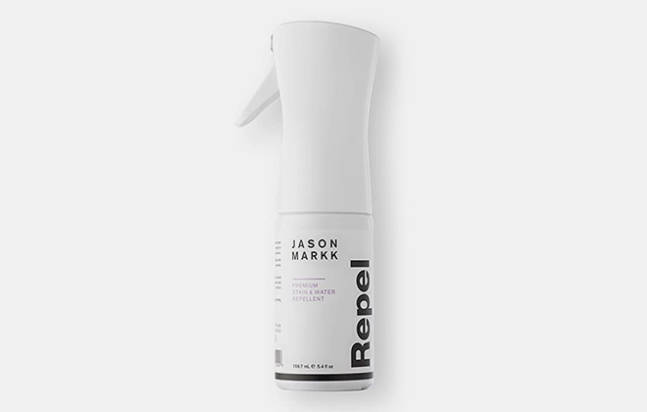
Jason Markk Repel
Repel is especially good for sneakers and will work on suede, canvas, and synthetic shoe materials. The water-based formula is colorless and odorless, and the non-aerosol pump makes it far less airborne and easier to apply with its large spray area. It’s also more durable than most spray waterproofers and will last weeks rather than days.
Buy Now $15
